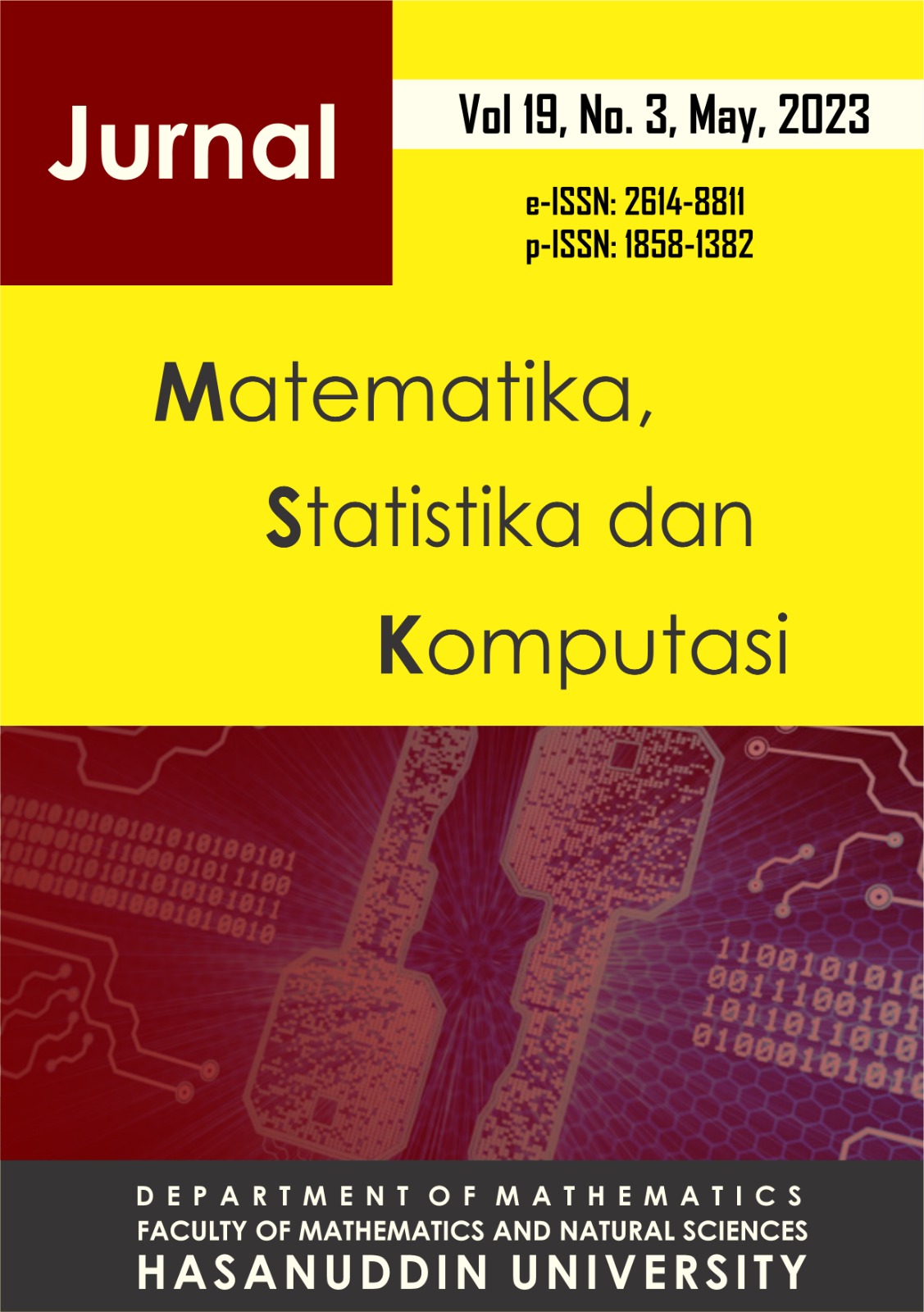Implementation Vector Autoregressive (Var) On Rice Production and Rice Productivity Data in Indonesia
DOI:
https://doi.org/10.20956/j.v19i3.24881Keywords:
Vector Autoregressive, Agriculture, Indonesian, IndonesianAbstract
Vector Autoregressive (VAR) is a statistical model used to analyze multivariate time series, especially in time series where the variables have a relationship that influences each other over time. This study aims to determine the relationship between rice production and rice productivity in Indonesian. The data used in this study is secondary rice commodity data based on rice production and rice productivity in Indonesian from January 2014 to December 2018. The Augmented Dickey-Fuller method in this study was used to carry out a stationary test on the data. The ACF and PACF graphs show that rice commodity data based on rice production and rice productivity can be modeled using VAR. Based on the VAR(1) model, that rice production and rice productivity influence each other. The R2 and Adjusted R2 values for each partial equation of the VAR model (1) tend to be small so that the diversity of the models for each equation cannot be explained by the variables of rice production and rice productivity in Indonesian.Downloads
References
Adiratma E. R., 2004. Stop Tanam Padi?. Memikirkan Kondisi Petani Padi Indonesia dan Upaya Meningkatkan Kesejahteraannya. Penebar Swadaya, 116 hal.
Faradhila A., Kusanandar D., & Debataraja N.N., 2018. Model Vector Autoregressive (VAR) dalam Meramal Produksi Kelapa Sawit PTPN XIII. Buletin Ilmiah Math. Stat. dan Terapannya (Bimaster), Vol. 07, No. 2, 77-84.
Hossain M., Khanam M., & Akhter S., 2022. An Econometric Analysis to Forecast the Food Grain Production in Bangladesh by Using ARIMA and VAR Models. Dhaka University Journal Science, Vol. 70, No. 1, 8-13.
Juliodinata A. I., Ahmar A. S. & Tiro M. A., 2019. Metode Vector Autoregressive dalam Menganalisis Pengaruh Kurs Mata Uang, Inflasi, dan Suku Bunga Terhadap Indeks Harga Saham Gabungan. Journal of Statistics and Its Application on Teaching and Research, Vol. 1, No. 2, 13-21.
Kementerian Pertanian Republik Indonesia. https://www.pertanian.go.id/home/?show=page&act=view&id=61. [16 Maret 2019]
Mulyaningsih T., Ruchjana B. N., & Soemartini, 2013. Pendekatan Model Time Series untuk Pemodelan Inflasi Beberapa Kota di Jawa Tengah. Bandung: Universitas Padjadjaran. http://pustaka.unpad.ac.id/wp-content/uploads/2015/01/Makalah-Semnas_Tri-Mulyaningsih_140720131.pdf. [17 Maret 2019]
Rathod S., Chitikela G., & Bandumula N., 2022. Modeling and Forecasting of Rice Prices in India during the COVID-19 Lockdown Using Machine Learning Approaches. Agronomy, Vol. 12, No. 2133, 1-13.
Rathod S., Chitikela G., & Bandumula N., 2022. Modeling and Forecasting of Rice Prices in India during the COVID-19 Lockdown Using Machine Learning Approaches. Agronomy, Vol. 12, No. 2133, 1-13.
Sumaryanto, 2009. Diversifikasi Sebagai Salah Satu Pilar Ketahanan Pangan. Forum Penelitian Agro Ekonomi, Vol. 27, No. 2, 93-108.
Putri. Z. H. S., dkk., 2021. Model Vector Autoregressive Integrated (VARI) dan Penerapannya Pada Data Perkembangan Harga Eceran Beras Di Tiga Ibukota Provinsi Wilayah Pulau Jawa. Pattimura Proceeding : Conference of Science and Technology. Vol. 2014.
Usman H. H., Djakaria I., & Payu R. M. F., 2020. Pendekatan Model Vector Autoregressive (VAR) untuk meramalkan Faktor-Faktor yang Mempengaruhi Inflasi Di Provinsi Gorontalo. Jambura Journal Of Probability and Statistics, Vol. 1, No 1.
Wei, W. W. S., 2006. Time Series Analysis. Addison Wesley: New York.
Downloads
Published
How to Cite
Issue
Section
License
Copyright (c) 2023 Author and publisher

This work is licensed under a Creative Commons Attribution 4.0 International License.

This work is licensed under a Creative Commons Attribution 4.0 International License.
Jurnal Matematika, Statistika dan Komputasi is an Open Access journal, all articles are distributed under the terms of the Creative Commons Attribution License, allowing third parties to copy and redistribute the material in any medium or format, transform, and build upon the material, provided the original work is properly cited and states its license. This license allows authors and readers to use all articles, data sets, graphics and appendices in data mining applications, search engines, web sites, blogs and other platforms by providing appropriate reference.








